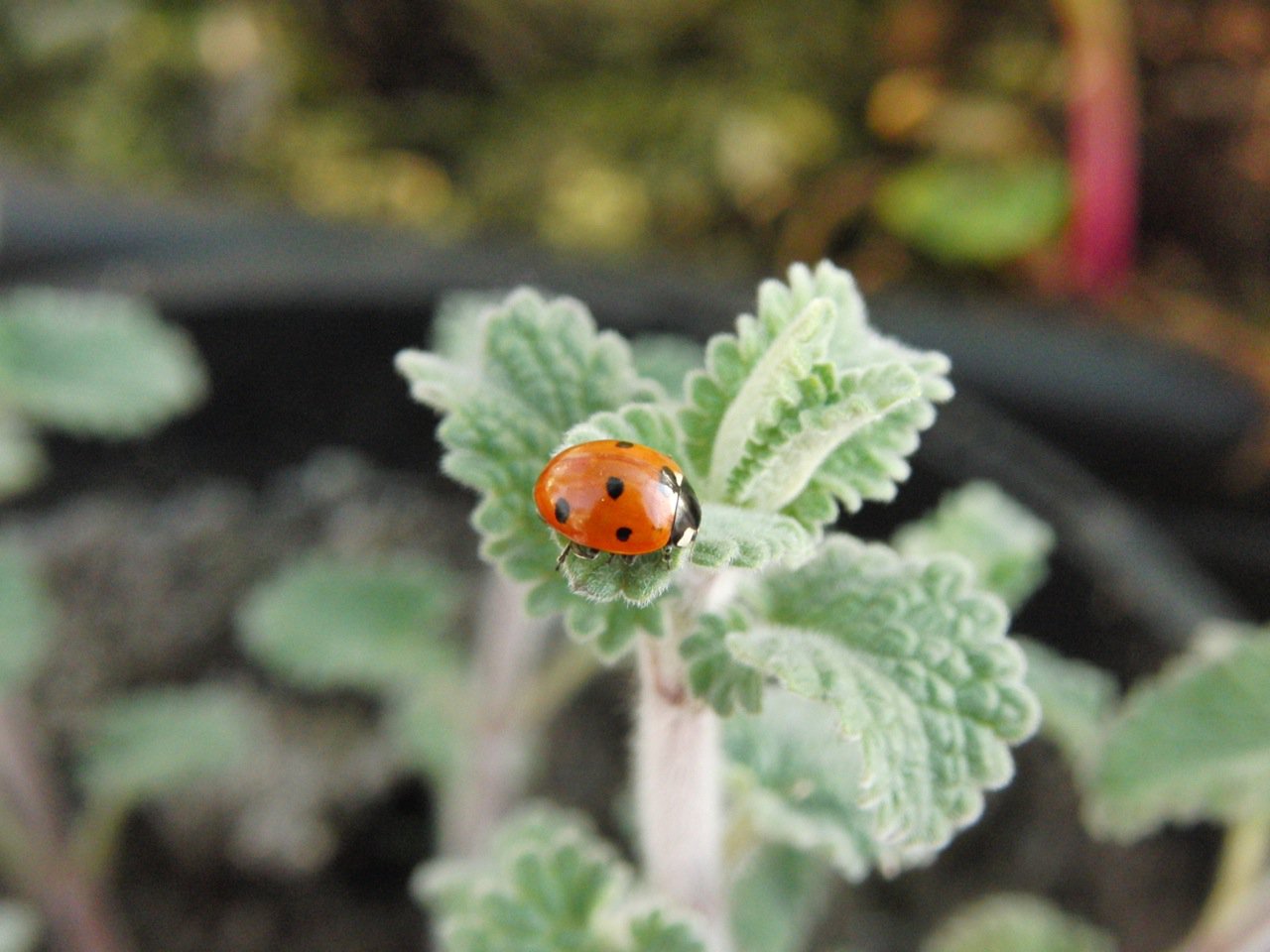 January might seem a funny time to be writing about ladybirds, but the gardeners’ best friends are very much alive and well in a garden and greenhouse near you, right now.
January might seem a funny time to be writing about ladybirds, but the gardeners’ best friends are very much alive and well in a garden and greenhouse near you, right now.
On the odd sunny day that entices you out into the garden, you won’t be far from a ladybug, a small red beetle with black spots on its wings, overwintering under moss, leaves or in the joints of branches. The adults overwinter, hunkered down in a protected spot and emerge occasionally on sunny days or if disturbed by gardening activities, until they properly emerge in spring. Usually in March but earlier if the weather allows. That’s when they are hungry and will feast on the early aphids that annoy gardeners and infest our plants. It’s perfect timing and all part of the magic of nature. Of course it doesn’t always run smoothly and a late (or early) spring can wreak havoc on their lifecycle causing dearths or huge epidemics, feast or famine for these red cloaked beetles.
While gardening at the weekend I uncovered half a dozen scarlet winged wonders and decided to relocate them to the greenhouse where they could continue their slumber, or take advantage of any early aphids hatching out as the weather warms.
While it seems a little mean to keep them in captivity at least they are safe from foraging birds in the garden and have a chance to make it thorough to spring, when they can easily escape thorough the greenhouse windows and doors that are open on warmer days. And I have unfortunately already disturbed them anyway. With hardy greenhouse salads about to burst into growth the leaves are sure to be a magnet for any overwintering aphids. So a few ladybirds should help keep them in check before they become a problem.
From early spring and right through the summer these red coats and the emerging orange and black larvae feed voraciously on aphids, keeping garden and greenhouse plants free from these sap sucking pests. The larvae are particularly weird in appearance and I can see why many people think that they are a pest. They are like small, black, flat armadillos with segmented bodies and orange spots, like something out of an alien movie and yet these fast moving critters are even more valuable in terms of pest control than their mature adult form, because they eat even more pests.
I’ve possibly got more that my fair share of ladybirds. The rich, deep, living sedum roof that clothes my eco shed and log store is the perfect habitat for these amazing creatures and seems to be a favoured shelter as well as somewhere for the larvae to pupate. In late summer the roof supports are liberally seasoned with pupa and emerging adults in all their stages. It’s a fascinating lesson in metamorphosis, the same process that a caterpillar uses to turn into a butterfly or moth and another example of the fragility of nature. Caterpillars are not all the larvae of the destructive cabbage white butterflies that decimate the veg patch. A little time and effort identifying potential garden or greenhouse pests would not only save innocent creatures being annihilated for no reason and the gardener losing valuable gardening friends, but the gardener would save money by not buying or using pesticides and the environment would be a much better place too.
So next time you spot a bug on your plants, a caterpillar munching a few leaves or something a bit weird looking, spend a little time to find out what it is. If it is a baddie, then remove it manually. Don’t reach for the chemical spray. Keep an eye on the site and if the problem becomes serious take advice on the best solution. The chances are that you are not the only one watching. Wildlife doesn’t miss a trick and if you choose to garden with nature rather than fight it all the way, there’s a good chance nature will restore the balance and a predator will make a meal out of your problem. Remember that there is a very fragile food chain in nature and if you remove part of it, the eventual impact can be huge. Think chaos theory, the butterfly effect and ripples in the pond and make it your New Year resolution to be nature kind this season.


